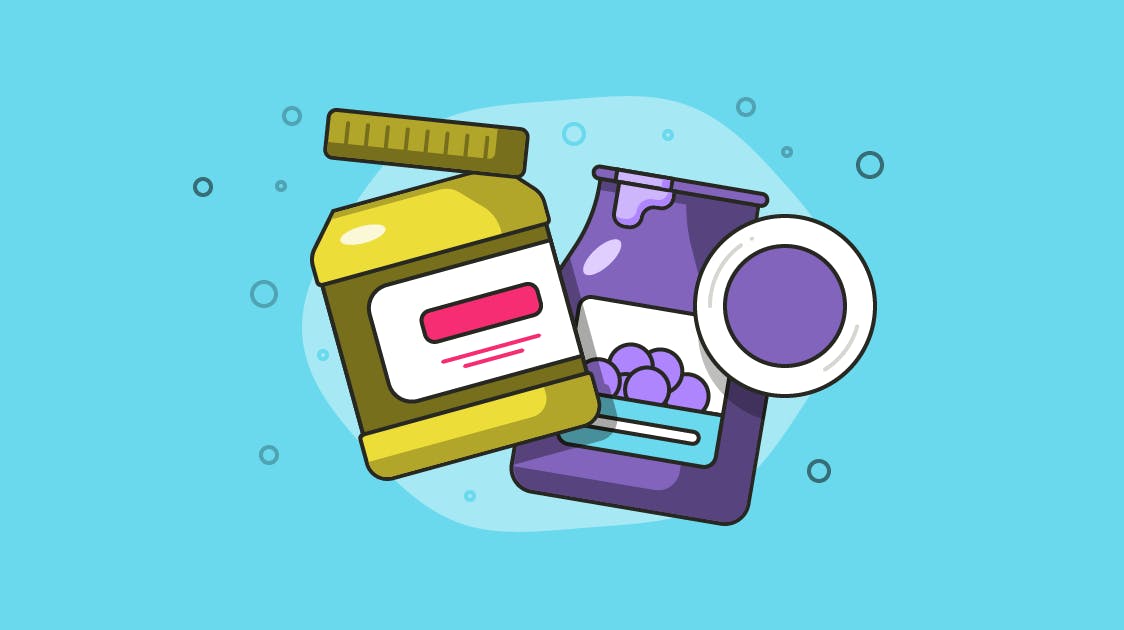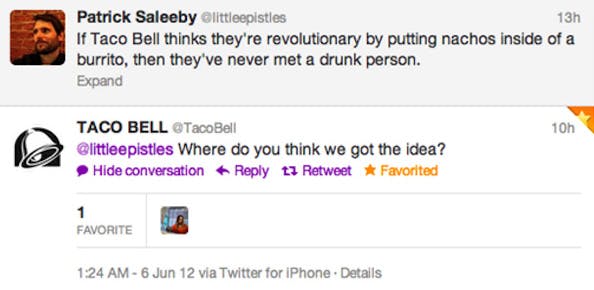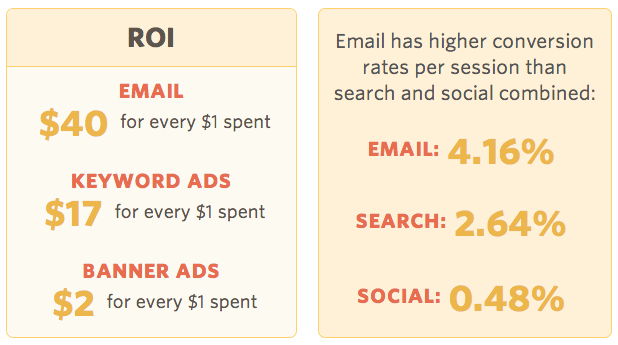Relationship Marketing: The Value of Marketing to Current Customers


Relationship marketing is strategy that emphasizes customer retention, satisfaction, and lifetime customer value. Relationship marketing can be defined as marketing to current customers vs. new customer acquisition through sales and advertising.
As opposed to transactional marketing’s focus on one-off sales, a good relationship marketing strategy is rooted in building customer loyalty and lasting, long-term engagement with your customer base. Benefits include increased word-of-mouth, repeat business, and a willingness on the customer’s part to provide valuable feedback to the company.
What’s the value in relationship marketing?
Opportunity and upside have to drive decision-making, so the question remains: why bother marketing to current customers? What are the potential benefits?
According to a study by Robin Buchanan and Crawford Gillies, the increased profitability associated with relationship marketing is the result of several factors:
There’s less dating around. Loyal customers don’t go shopping around and they’re far less to switch. As an added bonus, they’re less price-sensitive because they’re more focused on the value than price.
It’s the foundation of word of mouth. Strong relationships are essential to a high Net Promoter Score — the chance that a customer will happily refer your business to a friend.
Your regulars are your rock. Returning customers buy more and buy more often. They’re often less expensive to serve because of their familiarity with your business and how your product works.
Expansion becomes easier. Longstanding customers are much more likely to purchase ancillary products through upselling and cross-selling.
You reduce the cost of acquisition. Happy customers introduce you to new prospects, reducing the need to paid advertising and costly marketing campaigns.
There were also some less-obvious benefits noted in the study, such as the fact that companies with strong loyalty measurements are more capable of shutting out new competitors and generally don’t have to worry about competing products as much.
The not-so-surprising “secret” here is that relationship marketing has everything to do with practically useful engagement with customers. In fact, a national consumer survey conducted by TARP Worldwide found most customers place a high value on consistent service and helpful recommendations on new information and products.
For customers who do want to engage with your brand, they’re mainly concerned about how much value you provide outside of your product. And although relationship marketing is tough to completely define and differs from company to company, there’s an umbrella of activities you should know about:
1. Customer service
No matter how high tech relationship marketing becomes, the high-touch elements of personal support will always be the foundation that excellent customer service is built on.
The cornerstones for providing memorable customer support are reciprocity and personalization. To achieve these ends, it’s necessary to create clear relationship marketing goals and guidelines that don't leave people encumbered with red tape.
To get started, we recommend you read the following guides:
Remember that the companies who truly lead the way in exceptional service have this goal ingrained in their culture, so make sure you take the time to invest in employees who get why it’s important to take care of customers.
2. Content and customer education
"What if businesses decided to inform, rather than promote? You know that expression ‘If you give a man a fish, you feed him for a day; if you teach a man to fish, you feed him for a lifetime?’ The same is true for marketing: If you sell something, you make a customer today; if you help someone, you make a customer for life. In every business category, one company will commit to being the best teacher, and the most helpful. And that company will be rewarded with attention, sales, loyalty and advocacy by consumers who are sick to death of being sold, sold, sold.”
Jay Baer, author of Youtility
Content marketing is such a hot topic right now that calling it a hot topic has itself become a trope. But there’s a reason for this.
Traditional paid advertising, the standard interruption marketing method, essentially rents eyeballs or clicks for your business. Once the money stops flowing into those channels, the results stop, too.
By contrast, content marketing allows you to build an audience that you can keep. It should not be viewed as a traditional marketing expense since the returns for evergreen content will last as long as the thoughts stay relevant.
But content and relationship marketing as a whole go far beyond acquisition. Using content as a form of support is also marketing. Free resources, help documentation and webinars can marketing to customers as long as the content is educational, enjoyable, and motivational.
3. Social media marketing
If you can get past the hype, social media can truly be a useful channel for creating relationships with customers.
There are multiple approaches to using social media in relationship marketing, all of which need to properly reflect your brand’s values. As an example, see how FedEx has used social media to build trust and prestige with customers and to successfully resolve issues:
"Even though FedEx does online listening, Sauerwein’s team is the one responsible for handling actionable requests that customer care follow-up to help solve the issue or answer the question. Their engagement time? Mostly in a matter of minutes.”
Conversely, brands like Taco Bell who, let’s be honest, aren’t catering to a professional B2B audience, focus more on connecting with customers through humor. The result: Their Twitter account has become one of the most popular online corporate accounts.

Building relationships through social media is about knowing your customers and creating a social media presence that reflects what they want to see from you. If you’ve earned the right to appear in their streams, keep it by giving them content that they actually want.
4. Email marketing
"Email is still one of the most powerful relationship marketing mediums, as it is just so personal. At work, many employees spend 2 ½ hours in their inbox—that's a lot of time. Incorporate this channel by delivering free course content and product updates via email. A consistent stream of genuinely useful content will guarantee that your campaign is really effective—and it’s something that business owners have never been able to deliver over display ads or social networks.”
Chris Hexton, co-founder of Vero
There’s a reason every social network in existence asks for your email when you sign up: Email is still one of the best ways to turn a casual browser into a repeat user, and there’s lots of data to back that statement up.

An engaged email list is a powerful relationship marketing channel for both customers and leads/prospects. One benefit of email that isn’t often mentioned is that you rarely have to compete with fun over email. On Facebook I wish your company updates the best of luck, because you’ll be competing with BBQ and vacation photos.
What’s the point in creating useful resources for customers if they never hear about them? Having a clear, distraction-free channel to notify customers of these offerings is how you can elicit responses like this:
This may become a weekly tweet. Consistently amazed by the fantastic free resources @helpscout emails. Own a business? Go sign up. Now.
— Preveal (@preveal) May 1, 2013
The takeaway: Don’t let your updates get drowned in a sea of nonsense. Relationship marketing starts when customers opt-in.
5. Loyalty programs
Creating “sticky” customer loyalty programs is no easy task, but successful programs show that it’s more than worth the effort.
As with every aspect of relationship marketing, creating a great loyalty program starts with knowing what your customers want and what they want to do in order to get it. Oftentimes this is simply buying more of your products.
Here’s a quick 3-step rundown of how to angle any loyalty program toward customers’ needs:
Find a desirable outcome. Customers won’t commit to a program if the reward isn’t worthwhile. Additional access or bonuses for your product may be the way to go, but in many cases free stuff works best.
Find an action they will regularly commit to. Dropbox found that customers were very willing to refer other users for additional space. For other businesses, simply purchasing the product or service will be enough (i.e., rewarded for buying something they already want).
Make sure this system aligns with your business. With business goals in mind, the loyalty program should be crafted around your business’ modus operandi.
A slightly unusual example of the last point can be found in relationship marketing programs from companies like Neiman Marcus:
Committed customers, however, spend from $75,000 to just under $600,000 a year just to earn access to concierge service, private off-hours shopping events, custom travel and a whopping 5 points per dollar spent. For the Chairman's Circle members who spend more than $600,000 a year at Neiman's or Bergdorf Goodman, it's unparalleled access to a store they're practically living in anyway.
This program may seem absurd to the average business, but when you are a luxury brand like Neiman Marcus and your customers regularly reach such numbers, it just makes sense.
6. Customer surveys
"Most people don't understand that relationship marketing is about helping customers. I've learned that the best way to find out how to help is by using surveys. By regularly using both standard surveys and targeted micro-surveys, we've gained a deep understanding of what customers want. We’ve even gathered feedback for non-product related concerns, such as what content customers would find most useful.”
Ruben Gamez, founder of Bidsketch
Customers are far more willing to offer feedback to businesses they know, like, and trust.
Of the many methods to gather feedback from customers, surveys offer the best way to approach customers on a large scale. As Gamez mentions above, surveys can be useful to gather a sense of a majority opinion for an upcoming decision (like what sort of content customers might enjoy most).
We’ve previously written an entire post on creating smarter customer surveys, so I’ll spare you the tactical information on what gets surveys completed. But make sure you’re familiar with the three things every survey should be laser-focused on:
Intent. Why are we making this survey? What do we want to learn?
Brevity. Is this question really necessary?
Bias. Is this a loaded question? Are we communicating clearly with customers?
When you conduct smart, regular surveys with your customers, you’ll take a lot of the guesswork away and end up with insightful data that you can use to make your next move.
